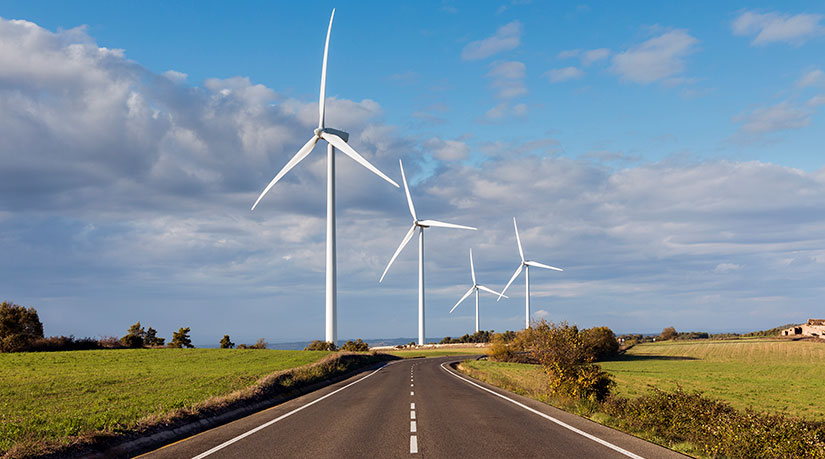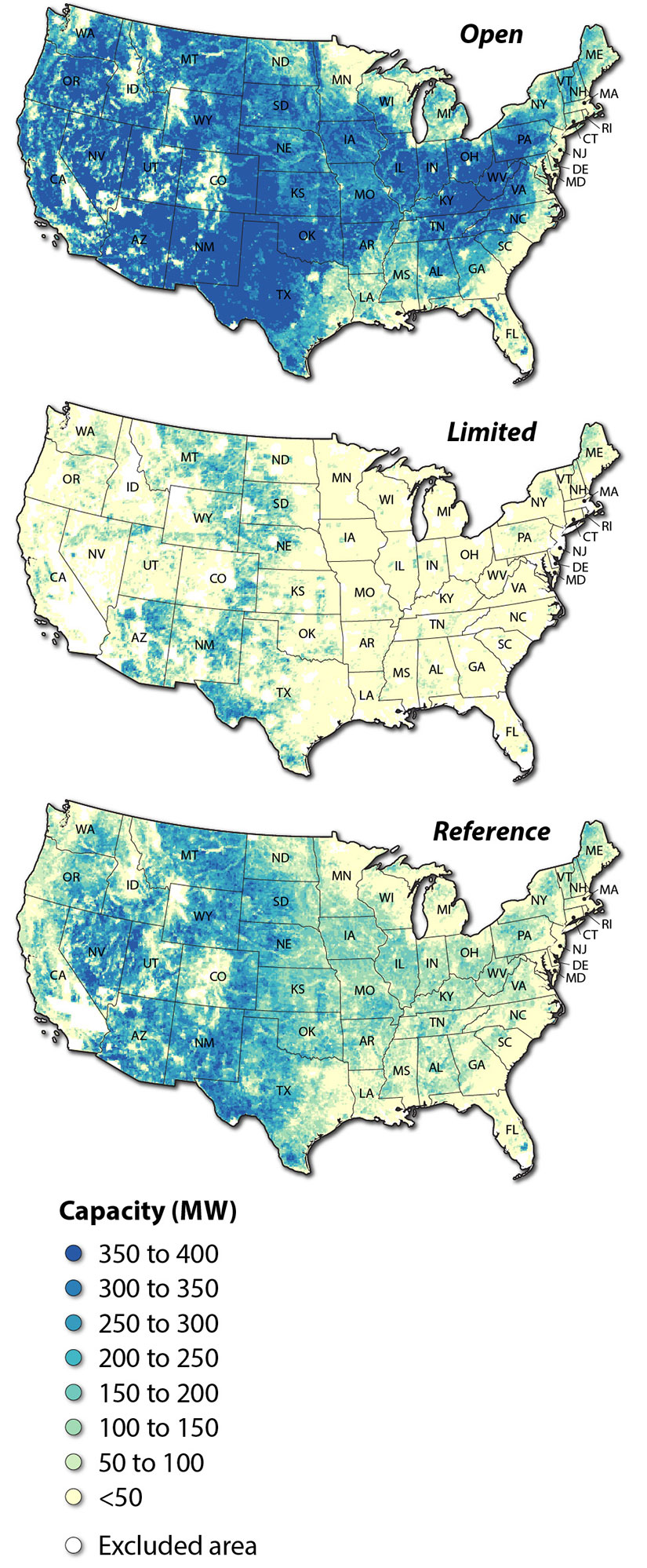Beyond Technical Potential: NREL Explores the Challenges of Siting Wind in a Low-Carbon Future
Detailed Geospatial and Power-Sector Modeling Points to Need for More Integrated Planning to Balance Local Deployment Decisions with Decarbonization Goals

Achieving decarbonization goals—including the Biden administration's climate and energy plan—will require rapid and sustained deployment of wind and solar power. However, the interaction between siting considerations and clean energy development at this scale is not well understood. What is more, this interaction is poorly reflected in data and tools used to inform these goals.
In two complementary research efforts recently published in the journal Energy, National Renewable Energy Laboratory (NREL) analysts combined detailed geospatial and power-sector modeling to shed light on this critical, yet underappreciated, topic.
"Our integrated analysis reveals the impact that wind siting constraints could have on U.S. wind development and broader power-system planning," said Anthony Lopez, NREL senior geospatial data scientist and lead author of one of the articles. "Ultimately, the research points to a need for more integrated land use, energy, and technology R&D planning to balance local clean-energy deployment decisions with mitigating global climate change."
How Do Land Use and Turbine Technology Influence U.S. Wind Potential?
To reflect the complex dynamics of wind resource potential, NREL analysts used uniquely detailed geospatial modeling and high-resolution datasets to examine onshore wind resource potential for the continental United States. Findings are published in an Energy journal article.
"Recent literature demonstrated a need for higher-resolution wind resource and built environment data to better capture localized resource variability and land availability," Lopez said. "Our analysis advances traditional wind technical potential assessments by using geospatial modeling and multidimensional datasets with unprecedented resolution."
Analysts factored in siting constraints, regulations, landscape, and infrastructure, including 124 million buildings and every road, railway, transmission line, and radar tower in the United States. Three main scenarios were modeled, ranging in degrees of siting constraints from open access (least restrictive) to limited access (most restrictive). Analysts also considered three primary wind turbine designs to study the impact of technology innovation on wind potential.
Simulations by NREL's Renewable Energy Potential Model (reV) revealed a 7X difference in total U.S. wind technical potential across the three scenarios. The analysis shows that, under the reference case, wind has a technical potential of 7,800 gigawatts (GW) in the continental United States, but under other siting regimes, this potential could range from 2,280 GW to 15,175 GW.
The limited access scenario reduced wind potential to 15% of the technical potential in the open access scenario and 10% of all land.
Among factors considered, infrastructure and road setbacks, or the required boundary around infrastructure where wind turbines cannot be developed, have the biggest impact on technical potential. Because setbacks are influenced by turbine tip heights—the taller the turbine, the larger the setback—future technology innovation that results in taller turbines and larger rotor diameters might negatively impact technical potential in terms of capacity. However, because of the higher wind speeds at higher levels above ground and the greater energy capture potential with larger rotors, the change in estimated annual energy production is less than 1%.
"Our analysis also demonstrates how siting considerations can dramatically impact wind plant sizes, particularly in more populated regions where conflicts with the built environment can challenge the development of large-scale wind power plants," Lopez said. "These trade-offs in wind turbine and plant design and their interactions with other land uses should be considered in local energy and land planning, and they deserve further study."
How Do These Wind Siting Considerations Impact the Evolution of the U.S. Power System?

Building upon the first study's geospatial analysis, NREL analysts used power-sector modeling to study the interactions between wind siting considerations and the evolution of the U.S. power system—publishing findings in a second Energy journal article.
Analysts developed three main groups of future scenarios: business-as-usual (BAU), low emissions, and 40% wind, each with varying assumptions about technology costs and emissions caps or wind generation levels. Analysts used resource potential estimates and siting constraints from the companion report as inputs to NREL's publicly available Regional Energy Deployment System (ReEDS) capacity expansion model.
ReEDS modeled 24 scenarios of how the U.S. electricity system might evolve from now till 2050 to study the impacts of different degrees of siting constraints, again ranging from open access (least restrictive) to limited access (most restrictive).
"This integrated analysis reveals that despite vast U.S. onshore wind resource potential, siting restrictions can have measurable impact on future wind development," said Trieu Mai, NREL senior energy analyst and lead author of this article.
Simulations showed that siting restrictions have a greater impact on future wind development under technology and policy conditions with higher demand for wind energy. In the scenario with the strictest emissions limit, 2050 onshore wind capacity varied by an increase of 7% (49 GW) in the least restrictive siting scenario to a decrease of 37% (270 GW) in the most restrictive case.
More stringent siting restrictions also lead to higher electricity prices and emissions. For example, 2040–2050 electricity prices averaged 4% higher and there was an additional 240 metric tons (10% of 2005 emissions) of carbon dioxide emissions in BAU scenarios with limited access compared to reference access. At the same time, carbon dioxide abatement costs increased by about $23 per metric ton in the carbon-constrained cases.
"Not only do the scenarios point to how siting can lead to substantial differences in emissions and the cost to decarbonize the grid, but they also show how wind siting can interact with future transmission expansion and plant design in complex ways," Mai said. "Many research questions remain, which will require collaboration among energy modelers, wind technology and plant engineers, land-use experts, ecologists, social scientists, and others."
NREL Wind Energy Science Leadership Series Webinar April 8
As part of an ongoing series on wind-energy-related topics, join a free webinar from 9 to 10:15 a.m. MT on Thursday, April 8, to hear from NREL analysts Anthony Lopez and Trieu Mai about the complex dynamics between wind siting and clean energy development at scale.
Last Updated May 28, 2025
